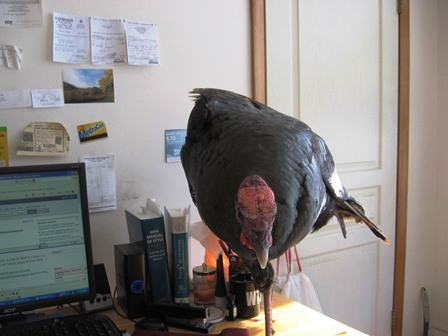These words are used interchangeably in many contexts, and such usage is often perfectly acceptable. In some contexts, however, they do have slightly different meanings.1
Although both words connote an attitude of resolve toward a contemplated action, intention is the weaker term, often suggesting “little more than what one has in mind to do or to bring about”2 and sometimes also further signaling that the action was not or will not be acted on. If, for example, a speaker begins a sentence by saying “I had every intention of….” the listener knows very well the gist of what’s coming next, regardless of the words that actually follow.
Intent, on the other hand, is all business, suggesting a concentration of will and the active application of reason in making a contemplated action come to pass1: “They were rushing upon the old peasant with no very merciful intent.”3Intent often further signals that a contemplated action actually has been or will be carried out—which perhaps leads to its use in sentences such as “He who wounds with intent to kill…. shall be tried as if he had succeeded.”3 Perhaps for these reasons, intent is now most often encountered in legal communication,1,3 and its connotations in such contexts are well understood. Imagine, for example, that NBC’s Law & Order: Criminal Intent had instead been titled Law & Order: Criminal Intentions. Loses something, does it not?
Another difference between the words is that intention is a countable noun, whereas intent is an uncountable noun.4 So, whereas a person might have a veritable laundry list of intentions related to a contemplated action (one might, for example, speak of one’s intentions for the coming weekend), one typically has only a single state of mind—an intent—related to that action. In short, intention often suggests mere ambition to achieve something, whereas intent often suggests the application of reason to actually achieve it. A clue to the distinction is that the words usually take different prepositions: intention takes to (think “to-do list”) or of, whereas intent takes on or upon.5
Intent and intention can sometimes apply in the same instance. A person might, for example, have every intention of never gambling again, even while heading to the track intent on making a killing.
In medical contexts, the words appear in the constructions “intent-to-treat analysis” and “intention-to-treat analysis”— ie, analyses “based on the treatment group to which [study participants] were randomized, rather than on which treatment they actually received and whether they completed the study.”6 Although both constructions are used, in light of the negative connotations of intent, “intention-to-treat” might be preferable.
The bottom line:
● Intention and intent are often used interchangeably, and in many cases such usage is acceptable.
● However, although intention and intent both connote an attitude of resolve toward a contemplated action, intention is the weaker term, often suggesting mere ambition. Intent, on the other hand, suggests deliberate planning or the active application of the will to make an action come to pass.
● Although in medical contexts “intent-to-treat analysis” and “intention-to-treat analysis” are used interchangeably, given the negative connotations associated with intent, “intention-to-treat” might be preferable.—Phil Sefton, ELS
1. Ask the Editor: “Intent” and “Intention.” Merriam-Webster Learner’s Dictionary website. http://www.learnersdictionary.com/blog.php?action=ViewBlogArticle&ba_id=78. Accessed September 10, 2013.
2. Intention, intent. Merriam-Webster’s Dictionary of Synonyms. Springfield, MA; Merriam-Webster Inc; 1984:458.
3. The Compact Oxford English Dictionary. 2nd ed. Oxford, England: Oxford University Press; 1991:861.
4. Intention or intent? Glossophilia website. http://www.glossophilia.org/?p=416. Accessed September 10, 2013.
5. Bernstein TM. The Careful Writer: A Modern Guide to English Usage. New York, NY: Athaneum; 1985:240.
6. Iverson C, Christiansen S, Flanagin A, et al. AMA Manual of Style: A Guide for Authors and Editors. 10th ed. New York, NY: Oxford University Press; 2007:873.

